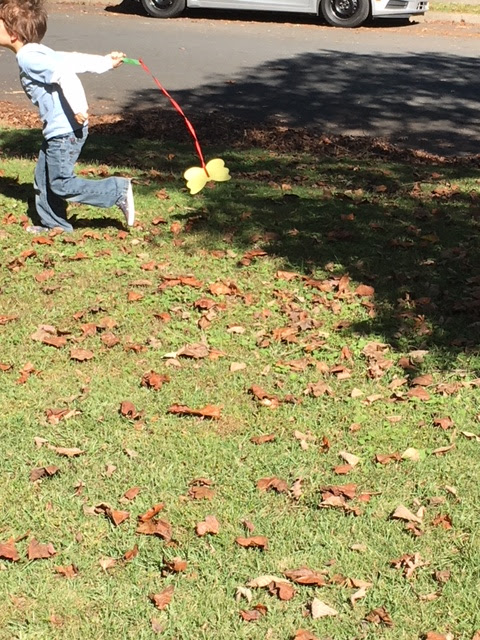We are blessed to receive Mother Goose Time and the Little Goose adaptation for free in exchange for sharing our journey here on our blog. We are really enjoying telling our readers all about the things we are learning, what we like best, and how we use the curriculum with three very different kiddos.
Thursday, we focused on migration with literacy activities like Moving Animals where the kids had fun with the pocket cube (one of their favorite Mother Goose Time manipulatives). They took turns tossing the pocket cube and pretending to migrate like the animal pictured on the cube. Ada Grace loved swimming like a fish and Noah's favorite was flying like a butterfly.
 |
| Ada Grace waiting to see which animal she can pretend to be next |
Next, each child created their own Butterfly Wand with an activity that gave them the opportunity to practice fine motor skills and fly around the yard like butterflies. The wands were similar to the hand kites my children love, so they were a big hit!
 |
| Noah's butterfly wand "migrating" around our yard |
Since everyone was really enjoying "flying" around the yard together, I decided to let them Wiggle & Giggle outside too. We listened to Migrate from the Dancing in Every Weather CD while pretending to migrate like the birds in the song.
 |
| Elly sharing her pattern links with her mom & baby sister |
Finally, we finished up the day by practicing patterns with the links from an earlier lesson and the pattern guide from the Table Top Math activity. Ada Grace loved copying the suggested patterns but Elly had lots of fun creating her own versions.
I really love the way our Mother Goose Time curriculum plays to each child's strengths and always finds a way to get them all engaged and learning, no matter how different their personalities.
Stay tuned to see what's in our November box from Mother Goose Time next week.
























